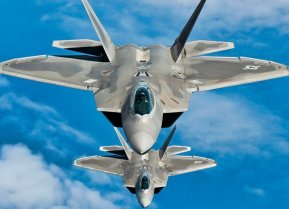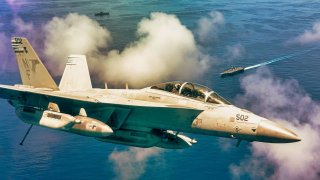What’s Driving the Houthis?
As it stands, the Houthis are well-positioned to attain five overlapping objectives in their intervention on behalf of Hamas as Israel fights to dislodge it from Gaza following the October 7 attacks.
When the Houthis began launching drones, rockets, and missiles at Israel and maritime traffic in the Red Sea, it was natural to ask what the group sought to achieve. After all, Yemen has no tangible interests in the Israel-Palestinian conflict, nor does it stand to reap any material benefit from harassing international shipping. As the U.S.-led coalition responds to Houthi attacks—a back-and-forth that could last for some time—designing an effective strategy to restore deterrence requires understanding the adversary's motives.
As it stands, the Houthis are well-positioned to attain five overlapping objectives in their intervention on behalf of Hamas as Israel fights to dislodge it from Gaza following the October 7 attacks. Iran has also secured numerous achievements via the Houthis as it wages its own multifront and multidimensional conflict.
First, the Houthis are seeking quick wins in the international arena during a dismal time in the domestic arena. Economic misery is not an aberration but a characteristic of the Houthi regime: they levy burdensome taxes and shakedowns to extort any remnants of the economy that remains in Yemen, while the lack of any credible justice system would make it impossible for anyone abroad to consider investing or doing business in Yemen. Many Yemenis harbor growing resentment of a regime that appoints its family members and cronies to top positions while the situation of the average Yemeni continues to decline.
To make matters worse, the group disrupts and skims off of international efforts to help the most vulnerable Yemenis. In light of the group's decimation of Yemen's already weak economy and minimal diplomatic power, the Houthis' best bet for inspiring Yemeni loyalty to the regime (or at least non-opposition) was to direct its military power against the widely unpopular Israel.
Second, the Houthis may have sought to provoke responses from the international community, like the airstrikes launched on January 11, to justify the continued misery of Yemenis. This may seem counterintuitive to most Westerners, but it makes perfect sense according to Houthi logic. If the group cannot deliver improved quality of life, then they will need to create new explanations for why Yemenis must endure poverty even during a ceasefire with the Saudi-led coalition.
Their aim is not necessarily to make life worse for Yemenis but rather plausibly redirect Yemeni frustrations outward. The group needs to find a new "culprit" while Saudi bombing, the Houthis' previous explanation for Yemen's poverty, has been paused due to a multi-year ceasefire. A U.S.-led alliance is the perfect candidate for Houthi villainization, as it comports with the Houthi‘s anti-Western ideology. Consequently, U.S.-led allies in the region should devise a surgical rather than ham-fisted response to Houthi attacks. Still, they should also be prepared for the Houthis to use any such response in their propaganda for domestic consumption.
Third, to avoid being targeted or pressured by its neighbors who prefer stability over chaos, the Houthis have sought to cower regional states. They have done so by launching attacks directed at Israel over the territory of nearby Arab states or in ways that harm their interests. They have then both tried to paint anyone who opposes such attacks as pro-Israel, to place pressure on those regimes' domestic legitimacy, and warned that anyone who opposed the Houthi position was at risk of themselves becoming a target. This has forced most Arab states opposed to Houthi aggression to do so silently, if at all. Bahrain is the notable exception. It is significant that the wealthy and powerful Saudi Arabia, a regional power, has been forced into uncomfortable and somewhat submissive positions on these issues by their Houthi neighbors, given their fatigue from years of fighting in Yemen and renewed focus on implementing Vision 2030.
Fourth, the regime in Sanaa seeks to demonstrate its value to its sponsors in Tehran. They stand to benefit from proving their worth. For the Houthis, establishing that they are both competent and can deliver an excellent return on investment for Iran may translate into additional funding from Tehran and perhaps greater access to Iran's more advanced weaponry. This may create some rivalry between the Houthis and other Iranian proxies and partners over who is the leading and most valuable member of the "axis of resistance." Even then, the Iranians stand to benefit from such competition.
Fifth, by targeting U.S. and Israeli interests in ways that are difficult to respond to, the Houthis are aiming to erode U.S. and Israeli prestige in the region. The Houthi worldview is summed up by the group's signature "scream" or slogan, "God Is the Greatest, Death to America, Death to Israel, A Curse Upon the Jews, Victory to Islam." Houthi attacks of this nature, depending on the response, could impact the U.S. and Israel in different realms, including defense partnerships and normalization agreements. Both the ideology behind this aim and the strategy for implementing it are straight out of the Iranian playbook.
Iran, too, has been able to notch successes after October 7. It has achieved unification of the fronts for the first time in a Gaza conflict—with daily attacks on U.S. or Israeli interests from Lebanon, Iraq, Syria, the West Bank, Gaza, and Yemen. Using its Houthi partner, Iran also demonstrated its leverage in wartime not only over the Persian Gulf and Strait of Hormuz—key shipping lanes—but also over another chokepoint in the Bab al-Mandeb Strait.
The Houthis likewise broke records in 2023 by using anti-ship ballistic missiles against commercial vessels for the first time. Their launch of a ballistic missile against Israel, which was intercepted by the Iron Arrow missile defense system, represented the first incident of space combat. Such operations not only allowed the Houthis to punch above their weight but also provided valuable battlefield experience and lessons learned to the Islamic Republic of Iran. The Islamic Revolutionary Guard Corps (IRGC) maintains a ship called the Behshad, which feeds intelligence to the Houthis. This was likely essential in the deployment of Houthi ballistic missiles against commercial vessels and American and European warships. IRGC training and expertise were also indispensable in the launching of ballistic missiles.
That said, although it seems unlikely that the Houthis have planned exactly how this plays out, the U.S.-led anti-Houthi coalition should make efforts to surprise Sanaa and its patron in Tehran. That was the opposite of what happened when the Houthis received advanced warning before coalition strikes after an interminably long period of Western deliberation on taking action. The coalition should also seek to create uncomfortable dilemmas for the group and its sponsors while demonstrating to regional allies that they are better off standing up to the Houthis with U.S. backing than cowering to the radical Houthi regime. With the right combination of firepower and finesse, the U.S. and its allies could cause the Houthi attacks to backfire.
About the Authors
Ari Heistein is a business development professional helping innovative Israeli startups break through to the U.S. federal market. Previously, he served as chief of staff and a research fellow at Israel's Institute for National Security Studies (INSS).
Jason M. Brodsky is the policy director of United Against Nuclear Iran (UANI) and a non-resident scholar at the Middle East Institute's Iran Program.
Image Credit: Creative Commons/U.S. Navy.


